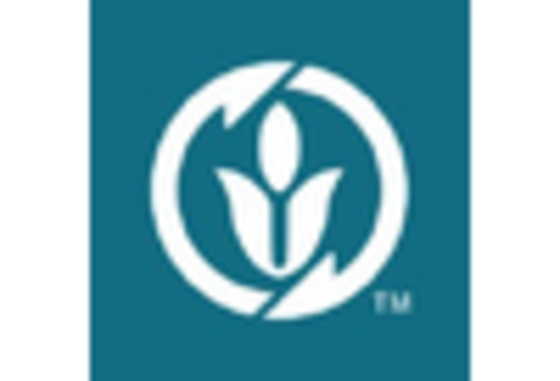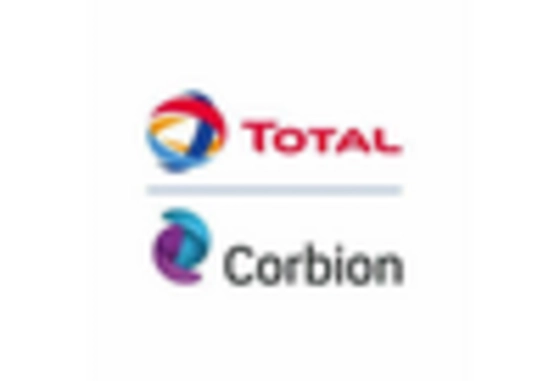Supportive Regulatory Frameworks
The Biopolymer Packaging Market benefits from an increasingly supportive regulatory environment. Governments worldwide are implementing stringent regulations aimed at reducing plastic waste and promoting sustainable packaging solutions. For example, several countries have introduced bans on single-use plastics, thereby creating a favorable landscape for biopolymer alternatives. This regulatory push is expected to accelerate the adoption of biopolymer packaging, as companies seek compliance with environmental standards. Furthermore, incentives for using biodegradable materials are being introduced, which could further stimulate market growth. The alignment of regulatory frameworks with sustainability goals is likely to enhance the attractiveness of biopolymer packaging, encouraging manufacturers to invest in eco-friendly solutions.
Corporate Sustainability Initiatives
The Biopolymer Packaging Market is increasingly influenced by corporate sustainability initiatives. Many companies are integrating sustainability into their core business strategies, recognizing the importance of reducing their environmental impact. This trend is reflected in the commitment of major corporations to transition towards sustainable packaging solutions. For instance, a significant number of Fortune 500 companies have pledged to use 100% recyclable or compostable packaging by 2025. Such initiatives not only enhance corporate reputation but also resonate with consumers who prioritize sustainability. As more businesses adopt these practices, the demand for biopolymer packaging is likely to rise, driving innovation and investment in the sector. The alignment of corporate goals with sustainability objectives is expected to propel the biopolymer packaging market forward.
Innovations in Biopolymer Technology
Technological advancements play a pivotal role in shaping the Biopolymer Packaging Market. Recent innovations in biopolymer materials, such as the development of biodegradable plastics derived from renewable resources, are transforming packaging solutions. For instance, advancements in polylactic acid (PLA) and polyhydroxyalkanoates (PHA) have led to enhanced performance characteristics, making them viable alternatives to conventional plastics. The market for bioplastics is projected to reach USD 44 billion by 2026, indicating a robust growth trajectory. These innovations not only improve the functionality of biopolymer packaging but also contribute to reducing the carbon footprint associated with traditional packaging materials. As technology continues to evolve, the biopolymer packaging sector is likely to witness further enhancements, fostering a more sustainable future.
Rising Consumer Demand for Eco-Friendly Products
The Biopolymer Packaging Market is experiencing a notable surge in consumer demand for eco-friendly products. As awareness of environmental issues increases, consumers are gravitating towards sustainable packaging solutions. This shift is evidenced by a report indicating that approximately 70% of consumers are willing to pay a premium for products packaged in environmentally friendly materials. Consequently, manufacturers are compelled to innovate and adopt biopolymer materials that align with consumer preferences. This trend not only enhances brand loyalty but also positions companies favorably in a competitive market. The growing inclination towards sustainability is likely to drive the biopolymer packaging sector, as businesses strive to meet the evolving expectations of environmentally conscious consumers.
Growing Investment in Sustainable Packaging Solutions
Investment in sustainable packaging solutions is a key driver for the Biopolymer Packaging Market. As the demand for eco-friendly packaging rises, investors are increasingly channeling funds into biopolymer technologies and startups. Reports indicate that investments in sustainable packaging reached USD 10 billion in 2023, highlighting the financial commitment to this sector. This influx of capital is facilitating research and development efforts, leading to the creation of advanced biopolymer materials that meet market needs. Additionally, partnerships between established companies and innovative startups are fostering collaboration and accelerating the commercialization of biopolymer packaging solutions. The growing investment landscape is likely to enhance the competitiveness of the biopolymer packaging market, paving the way for future growth.


















Leave a Comment